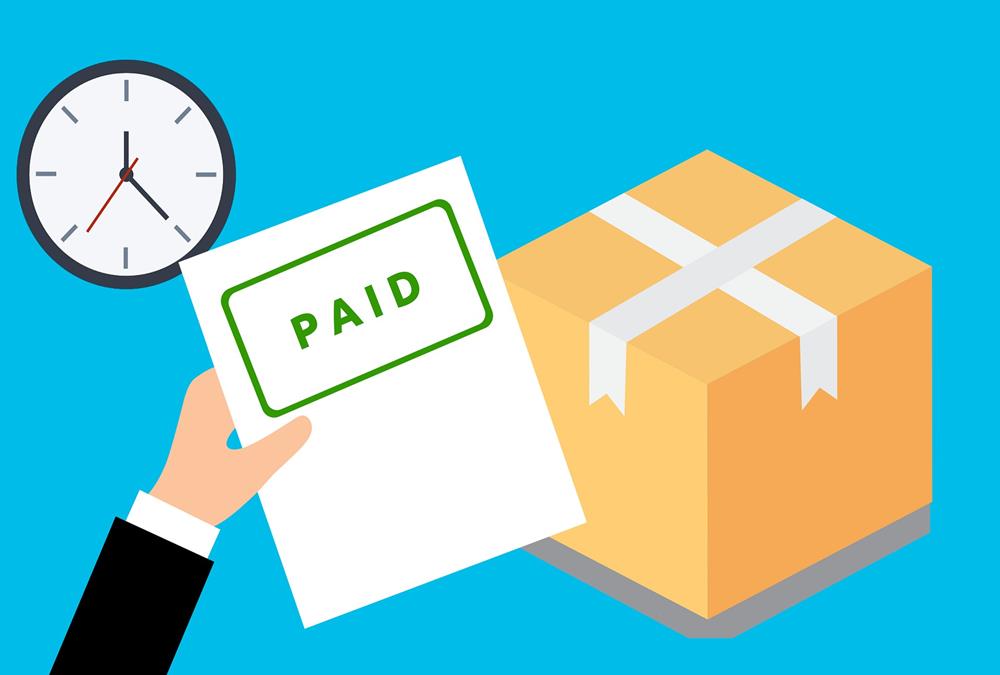- Home
- Business Processes
- Industry Knowledge
- Aerospace Industry
- Automotive Industry
- Banking Domain
- BFSI Industry
- Consumer/ FMCG Industry
- Chemicals Industry
- Engineering & Construction
- Energy Industry
- Education Domain
- Finance Domain
- Hospitality Domain
- Healthcare Industry
- Insurance Domain
- Retail Industry
- Travel and Tourism Domain
- Telecom Industry
- Leadership Skills
- eLearning
- Home
- Functional
- Procure to Pay
- Accounts Payable Documents
Accounts Payable Documents
This article discusses the documents that gets generated during the procure to pay process. Undestand why these documents are created, what is their business significance and how they are handled and generated using ERP or automated systems.
The documents that are generated during the accounts payable process are listed below:
Purchase Order:
A purchase order (PO) is a commercial document and first official offer issued by a buyer to a seller, indicating types, quantities, and agreed prices for products or services the seller will provide to the buyer. Sending a purchase order to a supplier constitutes a legal offer to buy products or services. Acceptance of a purchase order by a seller usually forms a contract between the buyer and seller, so no contract exists until the purchase order is accepted. It is used to control the purchasing of products and services from external suppliers. Creating a purchase order is typically the first step of the Purchase to pay process in an ERP system.
Invoice
An invoice or bill is a commercial document issued by a seller to a buyer, indicating the products, quantities, and agreed prices for products or services the seller has provided the buyer. An invoice indicates the sale transaction only. Payment terms are independent of the invoice and are negotiated by the buyer and the seller. Payment terms are usually included on the invoice. The invoices are received during the buy- to- pay process from the supplier and can be for both the products and the services.
Commercial Invoice
A commercial invoice is a document used in foreign trade. It is used as a customs declaration provided by the person or corporation that is exporting an item across international borders. Although there is no standard format, the document must include a few specific pieces of information such as the parties involved in the shipping transaction, the goods being transported, the country of manufacture, and the Harmonized System codes for those goods. A commercial invoice must also include a statement certifying that the invoice is true, and a signature. A commercial invoice is used to calculate tariffs, international commercial terms (like the Cost in a CIF) and is commonly used for customs purposes.
FIRC - Foreign Inward Remittance Certificate
Foreign Inward Remittance Certificate (FIRC) is a certificate issued by the bank to the account holder as a proof of inward remittance to India. Most of the statutory authorities use this document as a proof that an individual has received a payment in foreign currency from outside the country.
Invoice Voucher
A voucher is an accounting document representing an internal intent to make a payment to an external entity, such as a vendor or service provider. A voucher is produced usually after receiving a vendor invoice, after the invoice is successfully matched to a purchase order. A voucher will contain detailed information regarding the payee, the monetary amount of the payment, a description of the transaction, and more. In accounts payable systems, a process called a "payment run" is executed to generate payments corresponding to the unpaid vouchers. These payments can then be released or held at the discretion of an accounts payable supervisor or the company controller.
Debit Note
A document used by a purchaser to inform a vendor of the quantity and dollar amount of goods being returned, and requesting that the dollar amount be returned to the purchaser. A debit note is often used to return goods on credit. The vendor then issues a credit note to the purchaser indicating that the goods have been received, and that the purchaser will not have to pay for them. This is also referred as "debit memo". Debit note can also be issued for other adjustments like loss in transit, discounts over and above what was agreed or some other transactions, which warrant an adjustment to the invoice.
Excise Duty Challan
Excise duty challan is the documentary evidence of payment of excise duty. Excise duty is payable to authorities and the way typically handled in ERP is by defining tax authority as a Vendor. Hence, this document also becomes part of the buy-to-pay process. An excise or excise tax (sometimes called a duty of excise special tax) is an inland tax on the sale, or production for sale, of specific goods or a tax on a good produced for sale, or sold, within a country or licenses for specific activities. Excises are distinguished from customs duties, which are taxes on importation. Excises are inland taxes, whereas customs duties are border taxes. An excise is considered an indirect tax, meaning that the producer or seller who pays the tax to the government is expected to try to recover or shift the tax by raising the price paid by the buyer. Excises are typically imposed in addition to another indirect tax such as a sales tax or value added tax (VAT). In India, almost all manufactured products are included for excise duty. In India, for getting excise tax, Govt. of India has made Automation of Central excise and service tax with this, manufacturer can easily pay their excise tax online on every 10th of following the month through ER -1.
Service Tax Return & Service Tax Challan
Service Tax is a tax imposed by Government of India on services provided in India. The service provider collects the tax and pays the same to the government. It is charged on all services except the services in the negative list of services. All assesses are required to file a service tax return with the authorities along with copies of tax paid challans. Service Tax is payable to authorities and the way typically handled in ERP is by defining tax authority as a Vendor. Hence, this document also becomes part of the buy-to-pay process.
TDS Return & TDS Challan
TDS is one of the modes of collection of taxes, by which a certain percentage of amounts are deducted by a person at the time of making/crediting certain specific nature of payment to the other person and deducted amount is remitted to the Government account. It is similar to "pay as you earn" scheme also known as Withholding Tax in many other countries, one of the countries is USA. The concept of TDS envisages the principle of "pay as you earn". It facilitates sharing of responsibility of tax collection between the deductor and the tax administration. It ensures regular inflow of cash resources to the Government. It acts as a powerful instrument to prevent tax evasion as well as expands the tax net. Tax must be deducted at the time of payment in cash or cheque or credit to the payee's account whichever is earlier. Credit to payable account or suspense account is also considered to be a credit to payee's account and TDS must be made at the time of such credit. The deductor is the employer in cases where the payments are salaries. A deductor is required to issue a TDS certificate to the deductee within a specified time. Returns should be filed at timely intervals with the tax authorities and return should contain the details of payments done to central government account, for TDS. TDS is payable to authorities and the way typically handled in ERP is by defining tax authority as a Vendor. Hence, this document also becomes part of the buy-to-pay process.
Advance Tax Challan
Under the Income Tax Act, every assessee is required to pay tax in a particular financial year, preceding the assessment year, on an estimated basis. However, if such estimated income is less than 10000, then no advance tax is payable. Advance Tax is payable to authorities and the way typically handled in ERP is by defining tax authority as a Vendor. Hence, this document also becomes part of the buy-to-pay process.
VAT Return and VAT Challan
A value added tax (VAT) is a form of consumption tax. From the perspective of the buyer, it is a tax on the purchase price. From that of the seller, it is a tax only on the value added to a product, material, or service, from an accounting point of view, by this stage of its manufacture or distribution. The manufacturer remits to the government the difference between these two amounts, and retains the rest for themselves to offset the taxes they had previously paid on the inputs. VAT was introduced into the Indian taxation system from 1 April 2005. Of the 28 Indian states, eight did not introduce VAT. Each Indian state has a different sales tax. VAT is payable to authorities and the way typically handled in ERP is by defining tax authority as a Vendor. Hence, this document also becomes part of the buy-to-pay process.
Related Links
You May Also Like
-
This article discusses the key documents that gets generated during the import/export process. These documents may apply to both invoice to cash as well as order to cash cycles. Also learn the major custom docments for India.
-
When products arrive at a facility, there need to be a defined process to let them in. The process for accepting inventory when it arrives is called "Receiving". Any warehousing operation must be able to receive inventory or freight from trucks at loading docks and then stow them away in a storage location. Receiving often involves scheduling appointments for deliveries to occur, along with unloading the goods and performing a quality inspection.
-
Accounts Payable Journal Entry
Although in the large organizations the Procure to Pay Accounting process starts when the purchase order for supply of goods is released to the supplier. To keep things simple in the beginning we will discuss the core accounting entries related to the Accounts Payables process.
-
Miscellaneous Warehouse Processes
At the end of each inventory control, the Contractor provides the Ordering Person with an inventory report which contains a list of all stock adjustments. The Ordering Person uses the report to create, by use of his/her own means, necessary value and accounting adjustments related to the stock. Let us look at some to the mislaneous warehouse processes not covered earlier.
-
Inventory is money, and hence businesses need to perform physical inventory counts periodically to make sure that their inventory records are accurate. The traditional approach to conducting inventory counts is to shut down a facility during a slow time of year to count everything, one item at a time. This process is slow, expensive, and (unfortunately) not very accurate.
-
To stay competitive in today’s tough market, the location of your warehouse is vital. To grow retail business need to offer to customers faster and affordable shipping time, which is dependent on the warehousing location as the location of the warehouse affects the transit time to ship orders to customers.
-
Subsidiary Ledgers – AP Ledger
An accounts payable invoice gets recorded in the Account Payable sub-ledger at the time an invoice is received and validated that the respective goods corresponding to the invoice have been received. Then it is verified and vouchered for payment as per the payment terms agreed with the Supplier.
-
Payables are often categorized as “Trade Payables” & “Expense Payables”. “Trade Payables” are the monies due for the purchase of physical goods that are recorded in Inventory. “Expense Payables” are the monies due for the purchase of goods or services that are expensed.
-
Types of Order Picking Methods in the Warehouse
There are many different types of picking in a warehouse and each one works as a customized solution for each business. Depending on the size of your warehouse and inventory, the manpower you have on hand, and the number of customer orders made each day, there may be certain methods that are more efficient for you than others.
-
Understand the Accounts Payable process. Understand the AP cycle and the various tasks that need to be completed during AP transaction processing. Learn the key activities and setups that are done in any typical system during the AP processing.
Explore Our Free Training Articles or
Sign Up to Start With Our eLearning Courses

About Us
Learning
© 2023 TechnoFunc, All Rights Reserved










